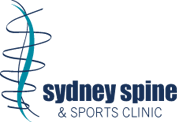When to exercise after you’ve had COVID-19
Topical advice for patients with mild or no symptoms
As Australia learns to live with COVID-19, many of our patients have asked when it’s safe to return to exercise or sport after infection. Due to the variability in patient experience with COVID infection and recovery, exercise is completely variable and individual depending on your situation. Here’s what the latest research suggests.
Advice for individuals with mild symptoms
If you are fully vaccinated against COVID-19 and have had a booster, it’s likely that your COVID experience can be quite mild. That said, we don’t recommend that patients exercise while symptomatic or mildly unwell. For many, fatigue and periods of exhaustion can remain for a few weeks after recovery from coronavirus.
Instead, we recommend that people who have suffered a mild infection should follow a slow and steady increase in intensity in exercise. Start very light (say 25% of pre-COVID intensity or weight). Sometimes, even light stretching can be exhausting after COVID. Make sure you listen to your body as it recovers.
Here is what the latest evidence says:
Wait until you are completely free of symptoms before resuming exercise.
Light stretches and functional movements are a good place to start.
Don’t resume your exercise full-bore. Start slow (25% to 50% of the weight or intensity) and slowly build up to your pre-COVID capability as your fatigue eases and your endurance increases.
No huffing or puffing. A well accepted rule of thumb is to be able to do any training or tasks while being able to hold a full conversation.
From there, gradually increase the time and intensity of your exercise slowly but consistently. But ensure you remain at a comfortable level and don’t push yourself.
Research in the UK found that two weeks of minimal exertion was the best and safest way to kick start your exercise routine again.
Daily self-monitoring is vital to track progress. This will also guide you when to seek medical assessment if necessary.
Advice for asymptomatic individuals
If you have been diagnosed with COVID but are completely asymptomatic, then recommendations become less clear. There is no evidence saying whether you should or should not exercise, so Sydney Spine’s advice is to use common sense. If you want to exercise, start slowly (following the guidelines above), and use your daily self-monitoring strategy. Things can change quickly when you are positive with COVID-19.
If you are struggling to tolerate exercise, or your heart rate is unusually elevated, then you should immediately desist from the activity.
Signs to look out for are:
abnormal levels of fatigue/exhaustion
dizziness or light headedness
breathlessness
coughing
or any other strange symptom that you hadn’t experienced pre-COVID
Chest pain is a big thing to monitor. COVID can affect the heart muscle (myocarditis) - but this is relatively rare with mild infection.
If you are training at a gym or studio, make sure you let the trainer or instructor know you are recovering from COVID, and again, make sure you self-monitor during the workout.
For elite athletes, BMJ have published an article guiding physicians on a return to play.
Be mobile with Sydney Spine
At Sydney Spine and Sports Clinic, we put you first. We believe in offering chiropractic solutions that enable you to make informed and educated choices about your health. We can help you find relief from muscle strains or tightness throughout your body. If you are suffering discomfort and would like to talk to us about how we can help you get mobile and active again – make an appointment with one of our chiropractors.

